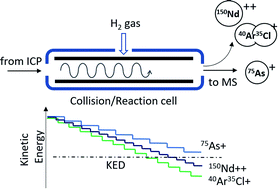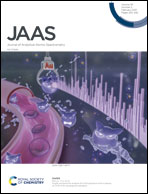Attenuation of doubly charged ion interferences on arsenic and selenium by ICP-MS under low kinetic energy collision cell conditions with hydrogen cell gas
Abstract
Most spectral interferences that arise in ICP-MS are caused by matrix or plasma-based ion overlaps on an analyte ion. These interferences can be effectively controlled using collision/reaction cell (CRC) technology operating in helium (He) collision cell mode, improving the data quality of trace elements in a variety of matrices. However, spectral interferences caused by doubly charged ions (M++), such as rare-earth element (REE++) ion interferences on arsenic (As) and selenium (Se), are difficult to resolve using single quadrupole ICP-MS operating in He collision cell mode. Therefore, a new method was investigated using hydrogen (H2) as a collision cell gas and kinetic energy discrimination (KED) to separate the ions. For KED to be successful there needs to be a difference in the collisional cross-section of the analyte ion and interfering ion. The collisional cross-section of a doubly charged ion is greater with H2 molecules than He (the traditional ICP-MS collision cell gas) due to the higher polarizability of H2. Utilizing these physical characteristics, the reduction of M++ interferences by KED was investigated both theoretically and experimentally. The developed low kinetic energy H2 collision cell method correctly measured 1 μg L−1 of As and Se in the presence of 0.5 mg L−1 each of 16 REEs. No mathematical interference correction equations were needed. A conventional He collision cell method provided a false positive result for As and Se of more than 10 μg L−1.



 Please wait while we load your content...
Please wait while we load your content...